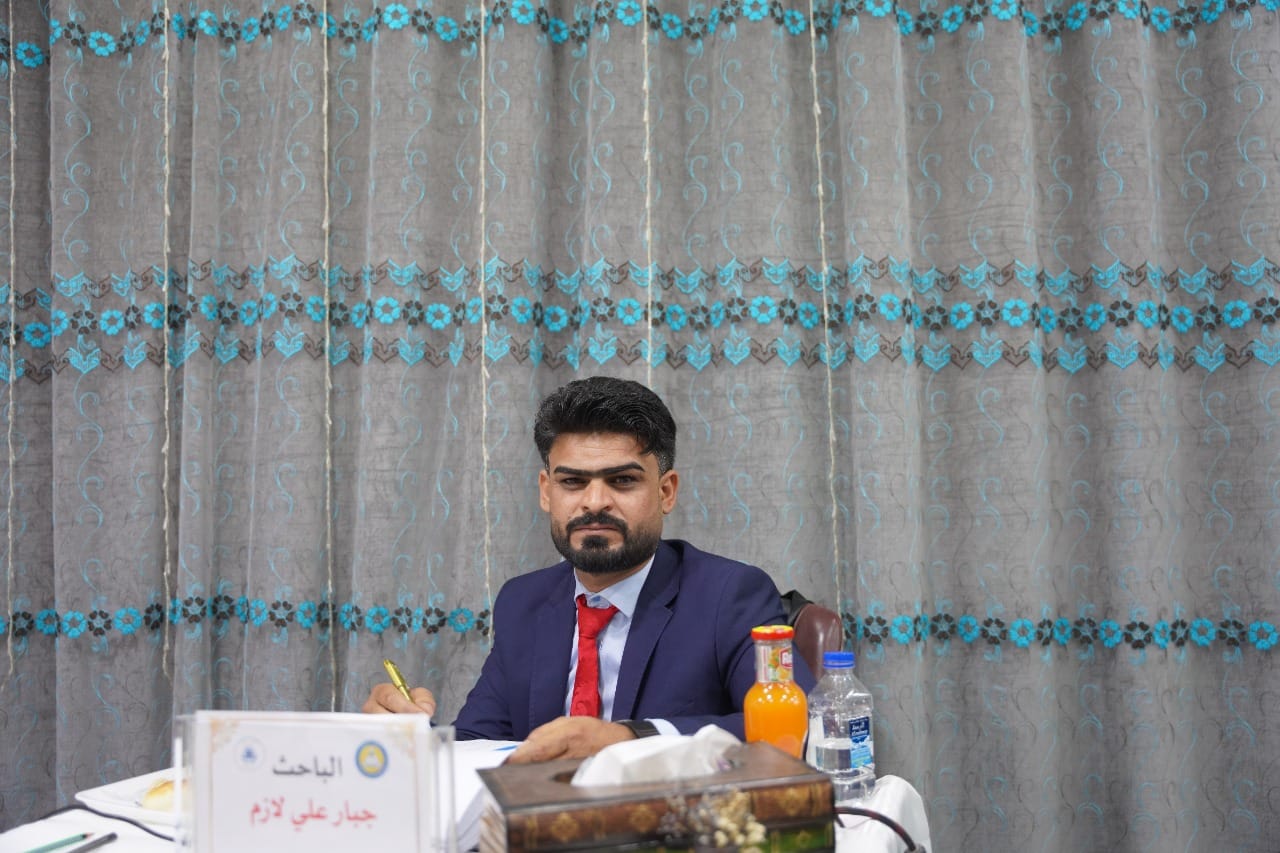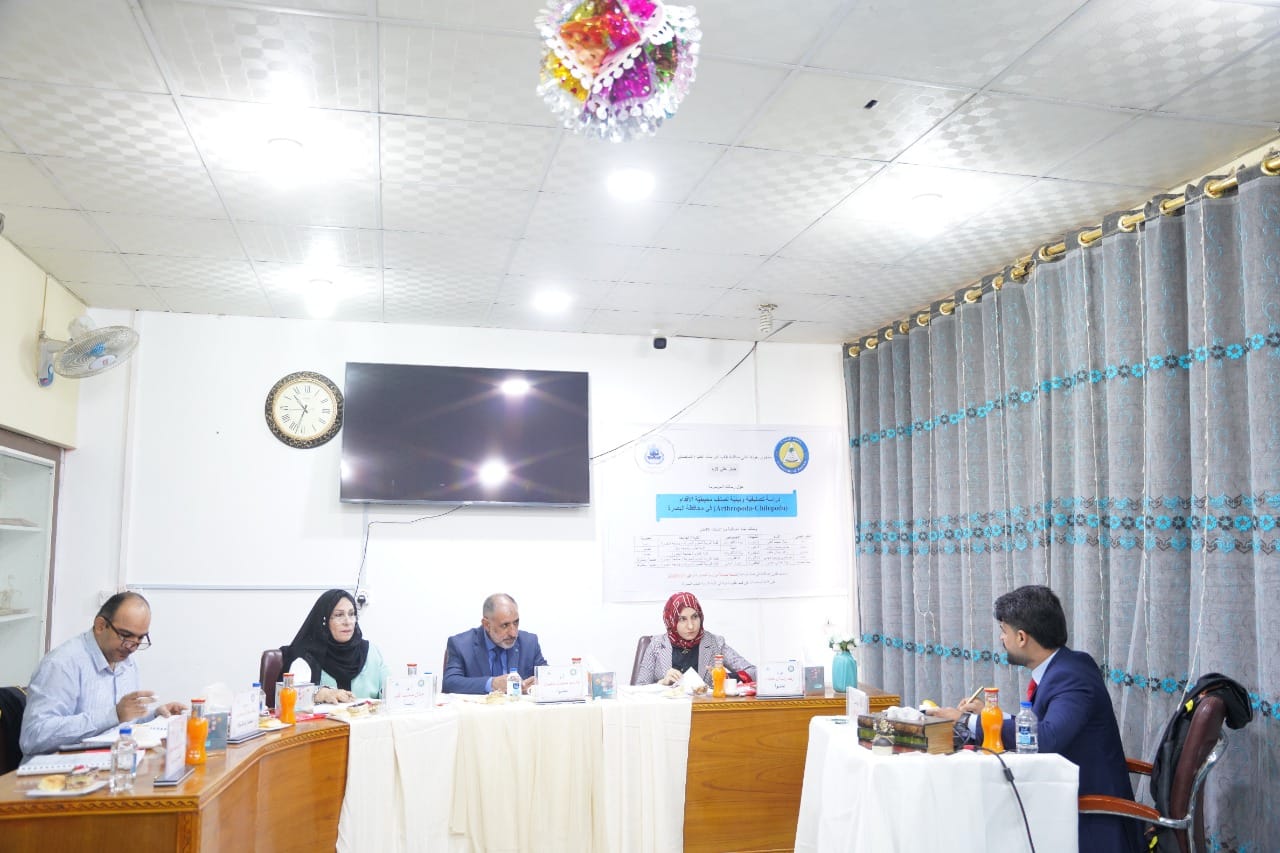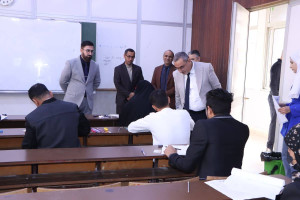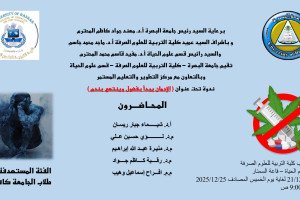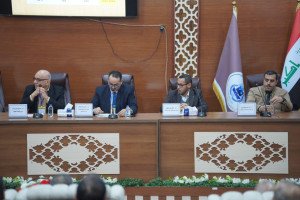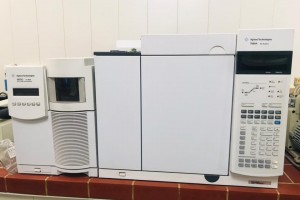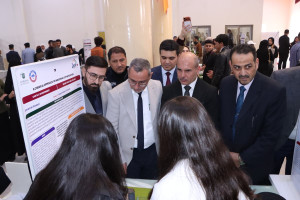
The College of Education for Pure Sciences at the University of Basrah discussed a master’s thesis on (Diagnostic and Environmental Study of the Secondary Division of Many Legs (Arthropoda-Myriapoda) in Basrah Governorate)
The thesis presented by the researcher (Jabbar Ali Lazem) of the current study included a morphological and anatomical description of the recorded species, and the design of a taxonomic key to isolate the taxonomic ranks and species recorded during the current study. ?
On the other hand, the environmental factors of ocean-footed species were studied, and this study is the first of its kind in Iraq. The study included measuring some environmental variables (air temperature, soil temperature, pH, salinity concentration, and soil moisture percentage), as well as the percentage of organic matter in the soil and soil texture.
The air temperature ranged between 39 - 23.11 ºC and the soil temperature ranged between 43.33 - 21.6 ºC and the pH value ranged between 8.11 - 9.96 The value of the soil conductivity ranged between 3.12 - 1.00 milli Siemens/ cm, and the soil moisture content ranged between 10.5% - 31.71%, and the percentage of organic matter ranged between 4.12% - 9.83%.
The purpose of the message is
The current study was a survey of a group of many-legged subphylum Myriapods, and the study included both the Celsius and Millennium classes (Chilopoda and Diplopoda) in Basra Governorate. Fixed (Haritha, Shatt Al-Arab, Al-Zubayr, and Abi Al-Khasib) and four temporary (Al-Qurna, Al-Madina, Al-Faw, and Al-Siba), samples were collected for the period from December 2021 to the end of June 2022.
105 samples were collected monthly and all of them were diagnosed to four orders, five families, and five species, and these species were diagnosed according to the approved taxonomic keys. The diagnosed species included Scolopendra mirabilis of the family Scolopendridae belonging to the order Scolopendromopha Cryptops anomalans are of the family Cryptopidae of the order Scolopendromopha, Mecistpcephalus envasi of the family Mecistpcephalidae of the order Geophilomorpha, and Lithobious microps of the order Lithobiidae Lithobiomorpha and Scutigera coleoptrata of the family Scutigeromorpha belonging to the order Scutigeromorpha, and some individuals have been identified in the millennium-foot class of the class Diplopoda, family Julidae, belonging to the order Julida
Soil components were studied through the results of volumetric analysis of soil particles (soil texture), and differences in percentages of components were recorded between the four fixed study sites of sand, silt and clay, which amounted to 24%, 30.4% and 45.6%, in the first station (Al-Hartha) and 19.3%, 32.2% and 48.5% in the second station (Shatt al-Arab), 72%, 12.7% and 14.3%, in the third station (Zubair) 16.3%, 31.7% and 52%, in the fourth station ( Abi Khasib).
With regard to the analysis of the necessary and nutritious elements for the studied arthropods, the study recorded different concentrations in the tissues of one of the centipede species S.mirabili, whose values ranged in micrograms/g dry weight, and they are as follows: The concentration of the element zinc ranged between 843-573, and selenium between 5.1 - 3.7, copper between 64.3 - 48.5, cobalt between 0.9 - 0.6, iron between 788 - 206, molybdenum between 9.1 - 5.1, manganese between 28.5 - 21.9, calcium between 5272 - 4066, potassium between 135 - 91, titanium Between 147 - 127, magnesium between 563 - 287, sodium between 919.9 - 682.3, phosphorous between 141.0 - 65.7, and carbon between 21.55 - 8.97.
